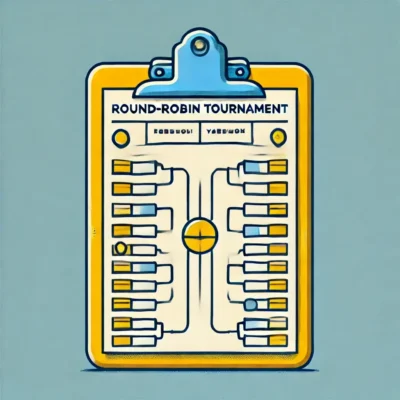
Off course golf is golf-related activities that take place outside traditional 18-hole golf course. Off course golf activities have gained popularity in recent years, providing alternative ways for more people to participate and enjoy golf in a less intimidating, more fun, and social environment.
Types of Off Course Golf
Driving Ranges
- Driving ranges are dedicated practice facilities where golfers hit balls into an open field.
- According to the National Golf Foundation’s 2023 Golf Industry Report, 21% of total golf participants in the United States exclusively used driving ranges or indoor golf simulators.
Indoor Golf Simulators
- Indoor golf simulators use technology to replicate the golfing experience.
- The National Golf Foundation report found that the number of people who participated in “screen golf” or simulator golf increased by 11% from 2022 to 2023.
Topgolf and Similar Venues
- Topgolf combines elements of a driving range with new technologies and hospitality offerings.
- Sensors and infrared technologies used by these venues allow golfers to accurately track your golf ball movement and improve your game.
- As of 2023, Topgolf’s parent company, Callaway Golf, reported in their annual financial statement that Topgolf operates over 80 venues globally.
Mini Golf
- Mini golf, also known as putt-putt, focuses on the putting aspect of golf.
- While specific participation numbers are not available, it remains a popular recreational activity for golfers of all ages.
Benefits of Off Course Golf
- Accessibility – Off course golf facilities are often more accessible than traditional courses, particularly in urban areas. However, specific data on proximity to populations is not available.
- Time Efficiency – Off course golf activities typically require less time commitment than a full round of golf, which can take 4-5 hours. Whereas average time spent at off course facilities is typically between 1-2 hours.
- Lower Barrier to Entry – Off course golf requires less equipment and potentially lower costs than traditional golf (although public golf courses in some countries keep tee fees low).
Impact of Off Course Golf on the wider Golf Industry
The rise of off course golf has impacted the broader golf industry. According to the National Golf Foundation’s 2023 report, off course participation (24.1 million) nearly equaled on course participation (25.6 million) in the United States.
Challenges
Despite its popularity, off course golf faces some challenges:
- Authenticity: Some argue that off course golf doesn’t provide the full golfing experience.
- Environmental Concerns: Large off course facilities can have significant energy requirements.
Future of Off Course Golf
The future of off course golf looks promising based on current trends. The National Golf Foundation reported that off course golf participation grew by 2.5% from 2022 to 2023, while on course participation remained relatively flat.
Technological advancements, such as improved simulators, are likely to further enhance off course golf offerings.
Off course golf represents a significant and growing segment of the golf industry. By offering alternative ways to engage with the sport, it’s attracting participants and complementing traditional golf experiences. As the industry evolves, off course golf is likely to continue playing an important role in the future of the sport.


